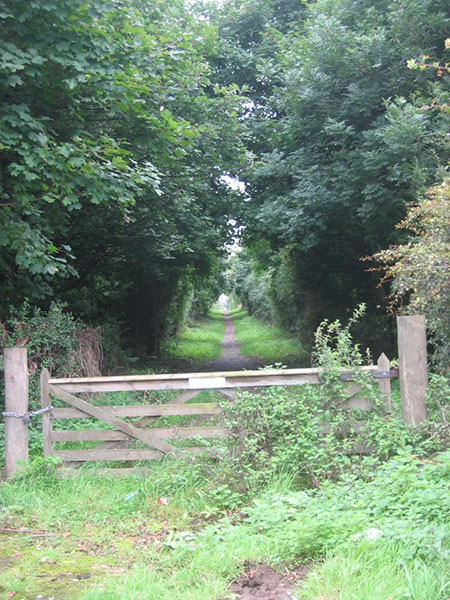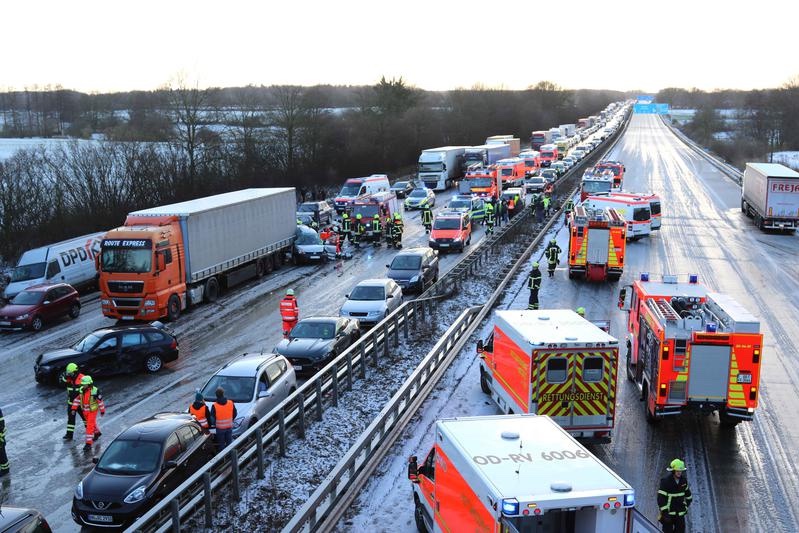Conversations about roads
Adam Smith was less than enthusiastic about roads. The conditions of Smithian growth -- the division of labour and the extent of the market -- were dependent on exchanges of information and commodities (or parts of commodities.) But Smith's depiction of the infrastructure of exchange was amazingly virtual. Exchange was a matter of conversations and correspondence; the daily life of "a sea-port town [with] the sight of the ships and the conversation and adventures of the sailors," or the capital Smith, The Wealth of Nations, pp. 126, 129.of a "little grocer," also in a "sea-port town," who has "all the knowledge" of "fifty or sixty different sorts of goods, their prices, qualities, and the markets where they are to be had cheapest."
The material exchange of people and things was largely maritime, or river-borne. "It is upon the sea-coast, and along the banks of navigable rivers, that industry of every kind naturally begins to subdivide and improve itself," Smith wrote at the beginning of the Wealth of Nations. The first arithmetic Smith, The Wealth of Nations, pp. 32-33.in the entire work is about the relative costs of sea transport (the maintenance of "six or eight men" and the "wear and tear of a ship") versus land transport ("a hundred men for three weeks," "the wear and tear of four hundred horses," "fifty great waggons") for a heavy consignment of goods between Edinburgh and London.
"What goods could bear the expence of land-carriage between London and Calcutta," Smith asked, and yet "those two cities, however, at present carry on a very considerable commerce with each other, and by mutually affording a market, give a good deal of encouragement to each other's industry." The misfortune of Africa, Smith, The Wealth of Nations, pp. 33-34, 36.for Smith, was to have "none of those great inlets, such as the Baltic and Adriatic seas in Europe," or the "gulphs of Arabia, Persia, India, Bengal, and Siam, in Asia, to carry maritime commerce into the interior."
In his Lectures on Jurisprudence, Smith said Smith, Lectures on Jurisprudence, p. 378.of roads that "of themselves they produce nothing," apart from "facilitating commerce," and speculated that if it were possible "to be able to plow up 1/2 of them, you would have so much more ground in culture and consequently so much more would be produced." In the Wealth of Nations, in an image that he described as "so violent a metaphor," Smith returned Smith, The Wealth of Nations, p. 321. to the idea of plowing up roads: "the judicious operations of banking, by providing... a sort of waggon-way through the air; enable the country to convert, as it were, a great part of its highways into good pastures and corn fields."
Waggon-ways, in the small Fife towns with which Smith was so familiar, were the beaten tracks along which laden wagons were drawn, laboriously, carrying coal from the mines to the shore. In his imagined world of markets, there was a virtual or weightless infrastructure of exchange: finance and information as the (aery) foundation of economic improvement. (The episode of the "late Bankers in Air" -- or the Ayr Bank in which so many of Smith's friends were involved -- was less judicious; "they did not commonly take the Air Notes, yet he would upon your account," David Hume Letters of David Hume to Adam Smith of October 1772 and April 10, 1773 in The Letters of David Hume, ed. J.Y.T.Greig (Oxford, 1932), vol. 2, pp. 265, 280; The precipitation and fall of Mess. Douglas, Heron, and Company, late bankers in Air (Edinburgh, 1778.)wrote to Smith about an Edinburgh banker in 1772, and then, six months later, "To day News arriv'd in town that the Air Bank had shut up; and as many people think for ever.")


The conversations about roads, in the Wealth of Nations, were idiosyncratically French. Smith, The Wealth of Nations, pp. 725-730."In France," Smith reported, "the great roads, the great communications which are likely to be the subjects of conversation at the court and in the capital, are attended to, and all the rest neglected." One of his more assertive proposals for reducing inequality -- that "when the toll upon carriages of luxury.... is made somewhat higher in proportion to their weight, than upon carriages of necessary use, such as carts, waggons, &c. the indolence and vanity of the rich is made to contribute in a very easy manner to the relief of the poor" -- was supported by an elaborate description of the (imagined) French state:
A magnificent high road cannot be made through a desert country where there is little or no commerce, or merely because it happens to lead to the country villa of the intendant of the province, or to that of some great lord to whom the intendant finds it convenient to make his court. A great bridge cannot be thrown over a river at a place where nobody passes, or merely to embellish the view from the windows of a neighbouring palace: things which sometimes happen... The proud minister of an ostentatious court may frequently take pleasure in executing a work of splendor and magnificence, such as a great highway which is frequently seen by the principal nobility, whose applauses, not only flatter his vanity, but even contribute to support his interest at court.
There was a political economy of roads (roads-1) in which individual entrepreneurs, like the "merchants and manufacturers" who are the enduring anti-heroes of the Wealth of Nations, sought to influence the choice of contracts for infrastructure projects; a political economy of roads (roads-2) in which the projects were chosen for the private benefit of rich or powerful individuals, who were in some cases also officials (the "intendants," or provincial governors, in France); and a political economy of roads (roads-3) in which infrastructure was itself a spectacle, something splendid and magnificent, that was the subject of conversation in the capital, and associated with "the general interest of the whole."
It is roads-3, or the political economy of conversations about infrastructure, that is most insidious in relation to climate change. Smith's glimpses of French official life were a picture, in relation to roads, of the policies of the Abbé Terray, who had been the minister of finance in 1769-1774, while Smith was finishing the Wealth of Nations. (He was replaced by Smith's admired friend A.R.J.Turgot, one of whose principal achievements as a provincial intendant was to reform the system of corvées -- by which individuals were obliged to work for free on road projects -- that Smith described Smith, The Wealth of Nations, p. 731.as "one of the principal instruments of tyranny" in rural France.)
Roads, in Terray's administration, were the object of the most grandiloquent hopes. There was public as well as private splendor, and a spectacle of investment in long-term, sustainable prosperity, in which the interests of individuals coincided, almost uncannily, with the general interest of the society. This was the scene depicted in one of the greatest paintings of the French 18th century, commissioned by Terray shortly before his fall in 1774: the Construction d'un grand chemin by Joseph Vernet, a delirious landscape of rocks and torrents and bridges and parapets, of wagons and cranes and windmills, that is at the same time a hyper-realistic portrait of men (and two women) at work, in the service of the state.
The magnificent spectacle of the electric vehicle economy -- within the multiple "green investments" of so many countries -- is evocative, for me, of nothing so much as the Abbé Terray's political economy of 1774. It was a successful program of investment, for a time, and even Edmund Burke, in his denunciation of France (and the French) in his Reflections on the Revolution in France, praised the infrastructure Edmund Burke, Reflections on the Revolution in France (London, 1790), p. 194.of the old regime, "the useful magnificence of her spacious high roads and bridges, the stupendous works of her ports and harbours." But the program of 1774 was something other than the foundation of long-term, sustainable and equitable prosperity.
The political economy of electric vehicles is much vaster than the improvement of roads (although the language of the US federal government's "next-generation-of-transportation-infrastructure-innovation" program, in June 2023, is itself quaintly https://www.whitehouse.gov/ostp/news-updates/2023/06/13/fact-sheet-biden-harris-administration-announces-new-actions-hosts-inaugural-arpa-i-summit-to-highlight-the-next-generation-of-transportation-infrastructure-innovation-for-americans/Burkean, with its "strategic investments in our roads, bridges, transit systems, rail, ports and airports," its "safe streets and roads for all," its "resilient infrastructure," and its "$7.5 billion national electric vehicle infrastructure program.") The objective, rather, is to determine the ways in which roads will be used over the next two or three generations, and their continuing importance in economic life. This is the opposite of a weightless way of organizing economic exchange. Smith's descriptions of the political economy of roads are a portent, here, of a dystopia to come. There are contracts to be had, as in (roads-1). There are powerful individuals to be persuaded, as in (roads-2). There is most of all, as in (roads-3), a spectacle of social improvement, and an illusion of virtuous conversation.
But to reproduce the present organization of economic life -- around the movement of people and things in gasoline-powered vehicles and diesel-powered trucks -- with the same way of living, in electric-powered vehicles, would be to endow an eternity of conflict. There would be less (or no) fossil fuel used in transport, and more energy; fewer emissions of greenhouse gases on American (or Chinese) roads, and more emissions of toxic pollution around cobalt https://www.nytimes.com/2021/11/20/world/china-congo-cobalt.htmlmines or cadmium https://www.nytimes.com/interactive/2023/05/16/business/china-ev-battery.htmlrecovery or lithium https://www.nytimes.com/2021/05/06/business/lithium-mining-race.htmlsalt flats; more homes that no one can get to except by car, or with the assistance On "mobility justice" and "the reality that low-income communities most affected by pollution from diesel trucks, highways and other sources have had the least access to zero-emission vehicles," see https://www.nytimes.com/2023/06/16/business/ev-ride-sharing-volunteers.html?searchResultPosition=1of neighbors; more "strategic" investments in roads into the distant future. This is the "inertia of use and wont" of an auto-industrial age Emma Rothschild, "The Auto Shift: I," "The Auto Shift: II," New York Times, November 26, 27, 1973. The phrase "inertia of use and wont" was used by Thorstein Veblen of the decline of the British industrial system.that was archaic half a century ago, and that is resilient still, amidst the "resilient infrastructure" -- or the conversations about roads -- of the green economy.

| « Capitalist externalities | Long-distance oppression » |
